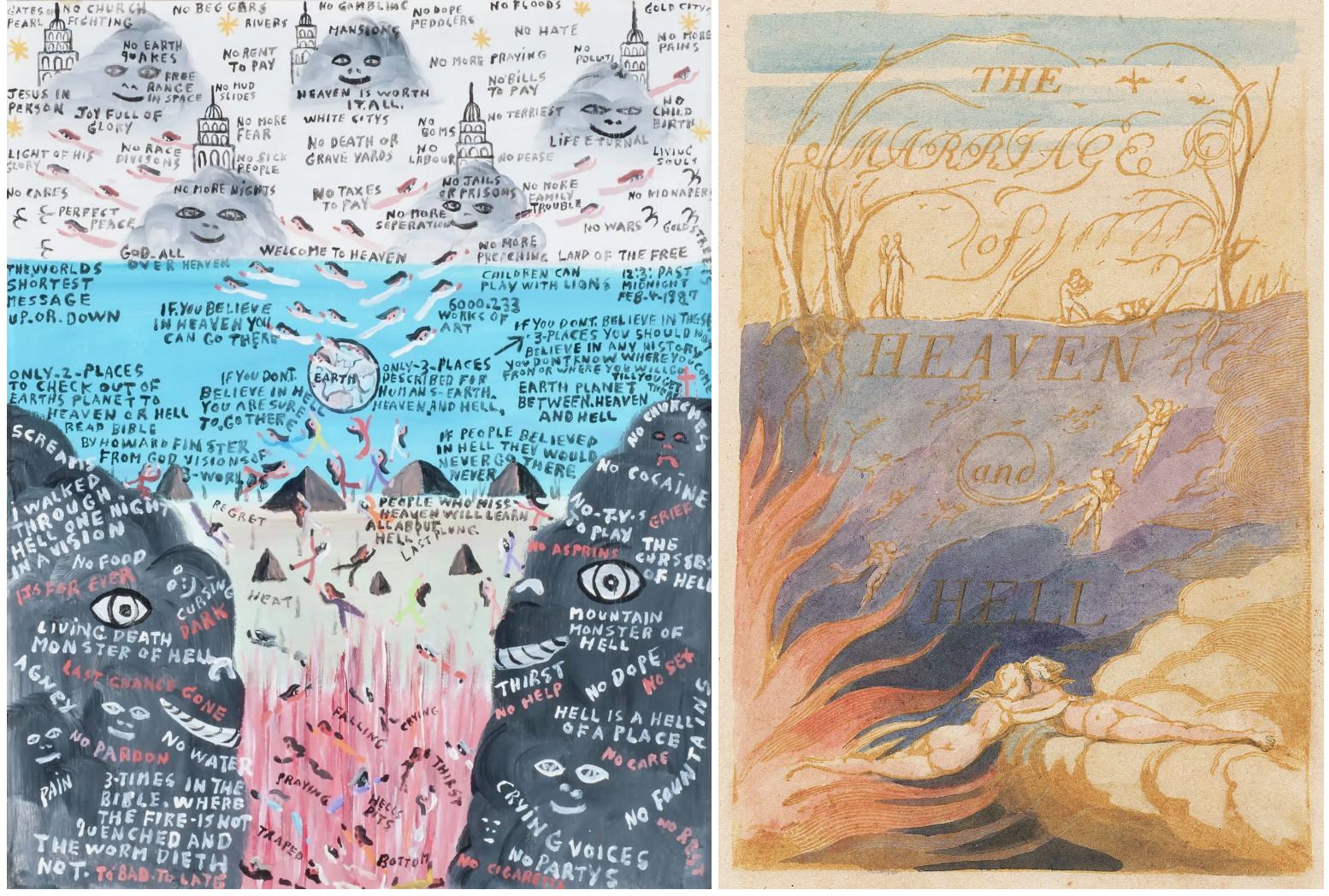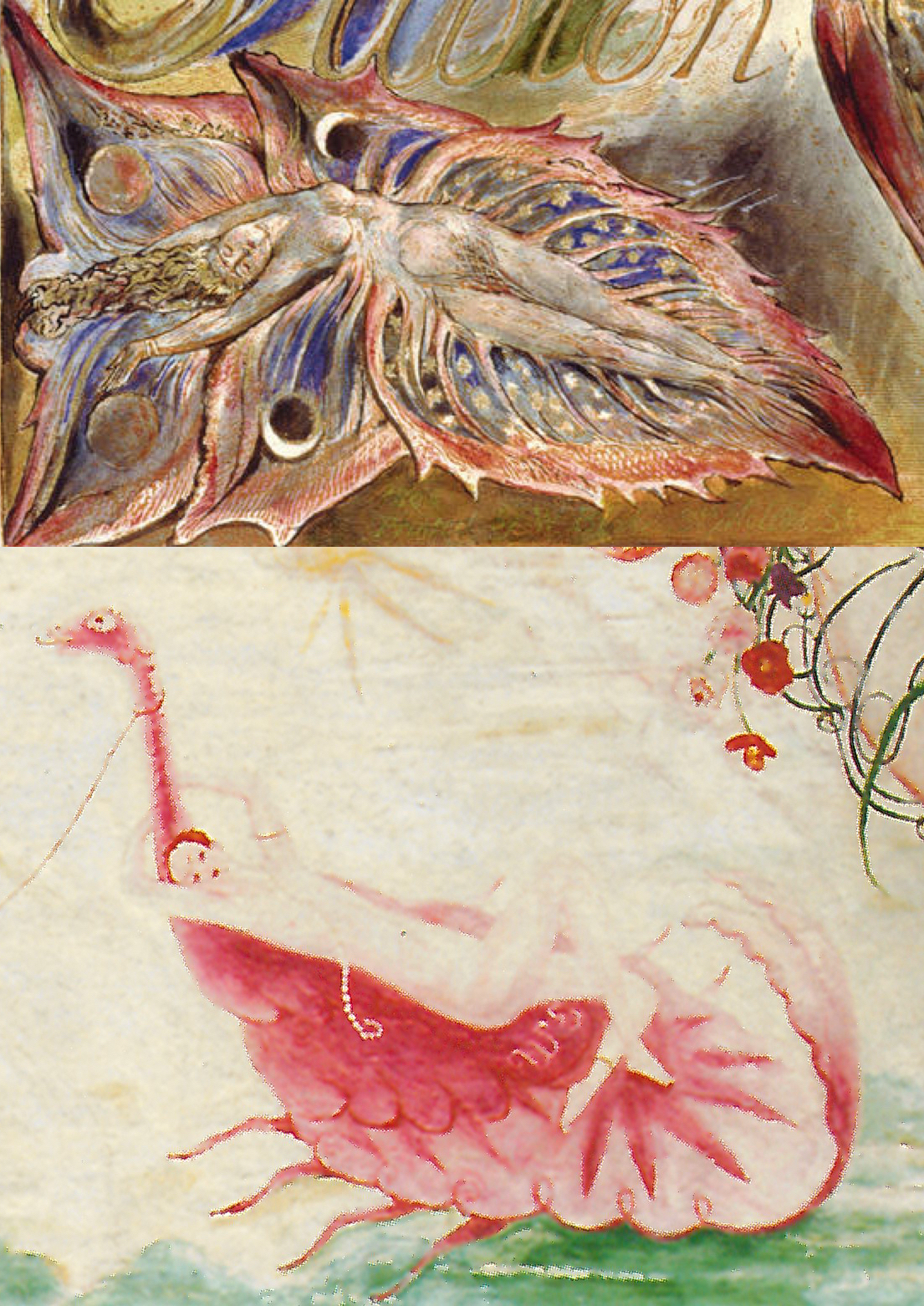Here we are, a month into coronavirus quarantine.
The grim spread of the virus in the last few weeks made me wonder if images of the apocalypse or end of the world appeared in the Blake Archive. Did William Blake paint anything about a plague? To answer my question, I would have to use the Blake Archive’s advanced search tool to sift through thousands of scanned Blake images. This blog post walks you through the rationale, educational materials, and user experience of the search tool.
As Morris Eaves discusses in his 2009 Digital Humanities Quarterly article “Picture Problems,” every image in the Blake Archive features an accompanying, exhaustive text description. These descriptions serve two purposes. First, they make Blake’s artwork accessible to the visually impaired. Second, they provide enough keywords to index a vast corpus of electronic images, making the Archive searchable “at a level deeper than artist, title, general subject, medium, and location.”[1]
After reviewing Morris’s essay, I watched the Blake Archive’s tutorial video about the search tool:
This video shows how search results are sorted by the location of the search term — an image’s title, transcription, etc. — and how the search term remains highlighted, once you open an image.
Next, I went to the Blake Archive website, moved my cursor next to the search bar, and clicked on a bubble that says “IT.” This code stands for “Image Tags,” the index terms derived from the images’ text descriptions. In this case, I wanted to find Blake images related to plague, pestilence, and other forms of mass devastation, so I looked for tags, or “stopwords,” that might be related thematically. It is possible to conduct Boolean searches using the search tool. Terms such as “AND” or “OR,” when paired with tags, allow you to search through the corpus with as much specificity or flexibility as you want.
I planned a Boolean search for the image tags “plague” OR “Death” OR “Famine” OR “scourge” OR “fire” OR “Heaven” OR “Hell” OR “Satan” OR “Horror” OR “John” OR “dying” OR “stigmata.” I included “John” in case Blake produced images inspired by the Book of Revelation. Since I am unfamiliar with many of Blake’s literary characters (mea culpa — I’m an intern who hasn’t read Blake!), I excluded the names of Blake’s invented characters or places from my search.
The result of my first search was disappointing: “NO RESULTS.”

Why did this happen? I wondered. Quotation marks around terms, paired with a plus sign, allow for exact keyword searches in Google. Maybe the Blake Archive wasn’t like Google. Perhaps the quotation marks confused the Blake database.
I ran the search again without quotation marks: plague OR Death OR Famine OR scourge OR fire OR Heaven OR Hell OR Satan OR Horror OR John OR dying OR stigmata. This time, the Archive yielded dozens of images that featured my stopwords in their image descriptions or metadata. To convey the scope of the Archive’s holdings, I’ll break down the matches by category: 28 matches in titles, 43 in transcriptions, 56 in illustration descriptions, 61 in image tags, 27 in editors’ notes, 62 in copy/set/receipt information, and 10 in work information. I could then view any image in Gallery or Reading mode.
Here are a few choice Blake images of chaos and transformation. Several of them come from Blake’s Water Color Drawings Illustrating the Bible, composed circa 1780. The images inspired by John’s Revelation, in particular, do not disappoint.
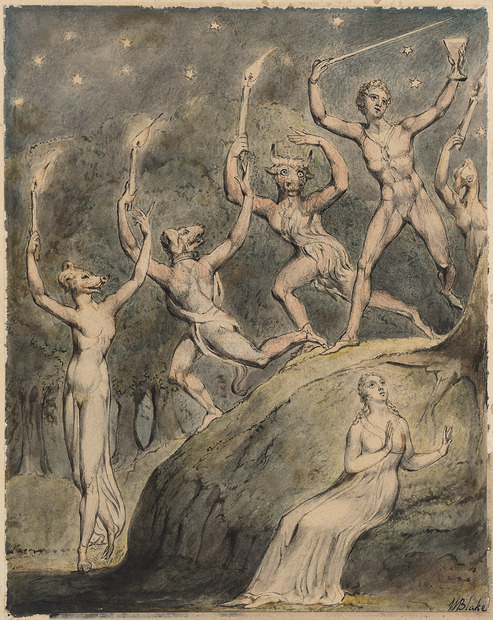
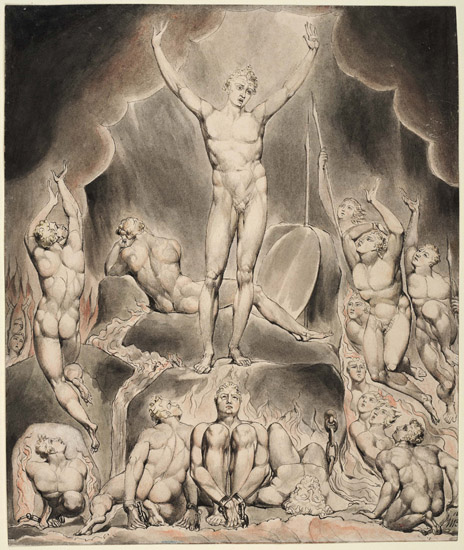
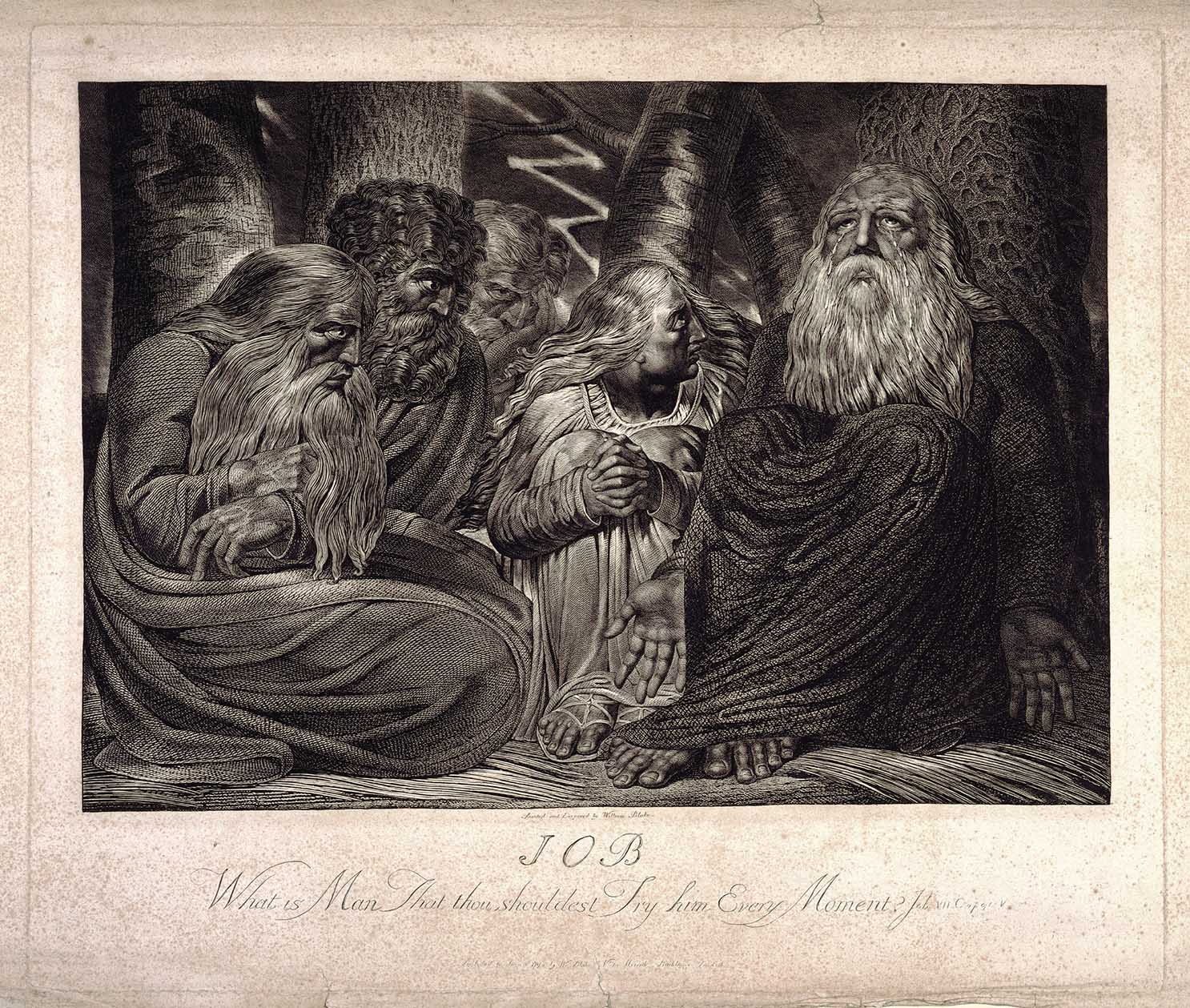
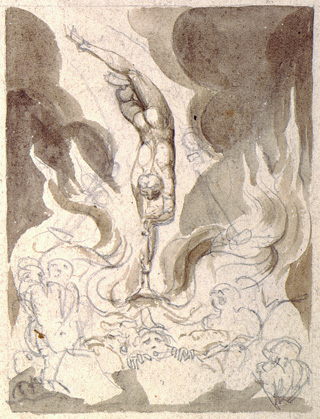
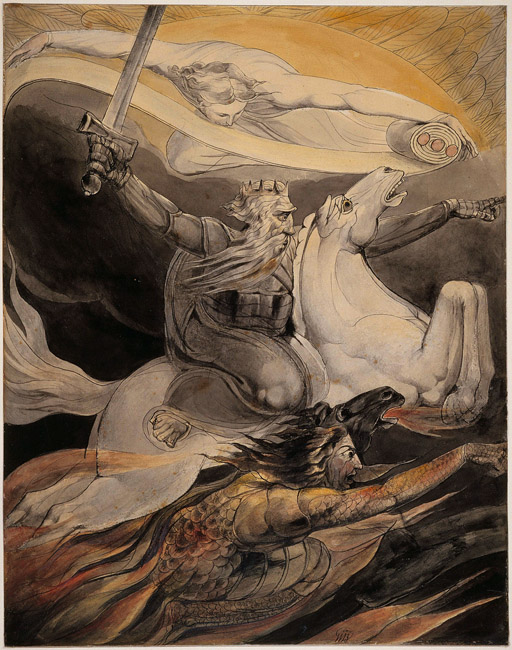
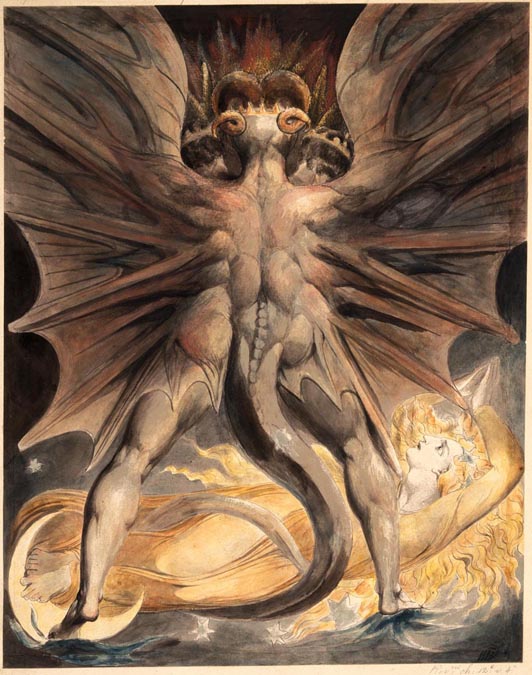
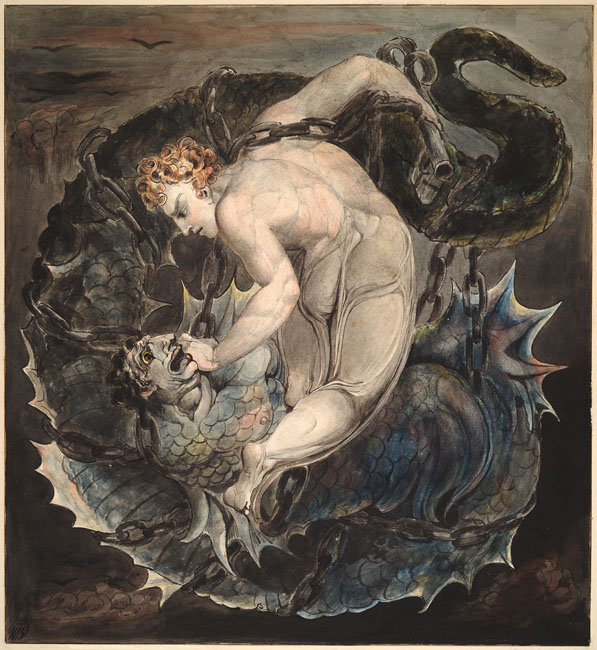
As you peruse William Blake’s visions of doom, may appropriately edgy music accompany your journey. I recommend U2’s classic “Until the End of the World,” one line from which — “Waves of regret and waves of joy” — evokes Blake’s title Songs of Innocence and Experience.
In my dream I was drowning my sorrows
— U2, “Until the End of the World,” Achtung Baby (Universal Music Group, 1991)
But my sorrows, they learned to swim
Surrounding me, going down on me
Spilling over the brim
Waves of regret and waves of joy
I reached out for the one I tried to destroy
You, you said you’d wait
’Til the end of the world
— Dan Gorman
Special thanks to Morris Eaves and Eric Loy for their guidance on this article.
Endnotes
[1] Eaves, Morris. “Picture Problems: X-Editing Images 1992–2010.” Digital Humanities Quarterly (DHQ) 3, No. 3 (2009). http://www.digitalhumanities.org/dhq/vol/3/3/000052/000052.html.

